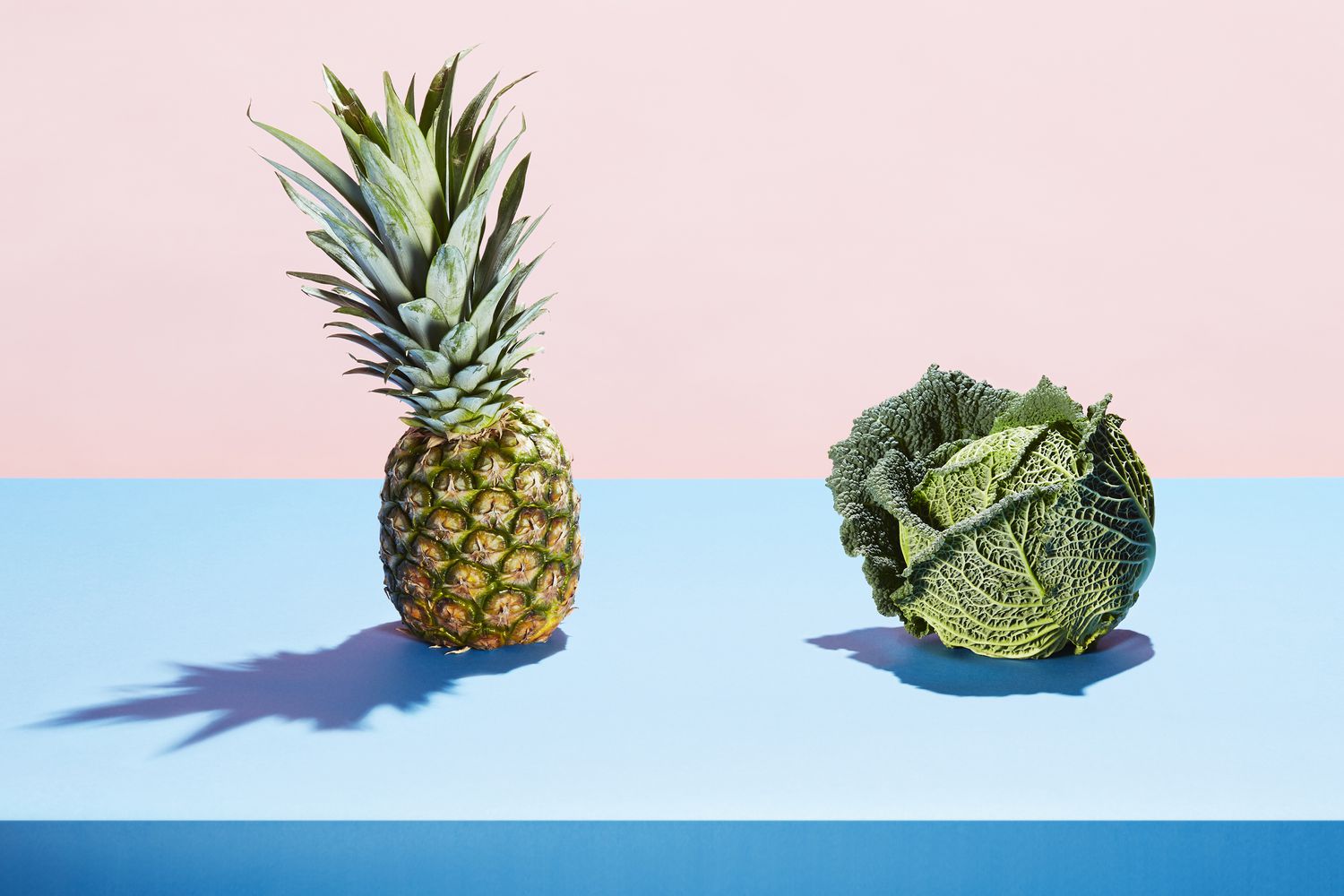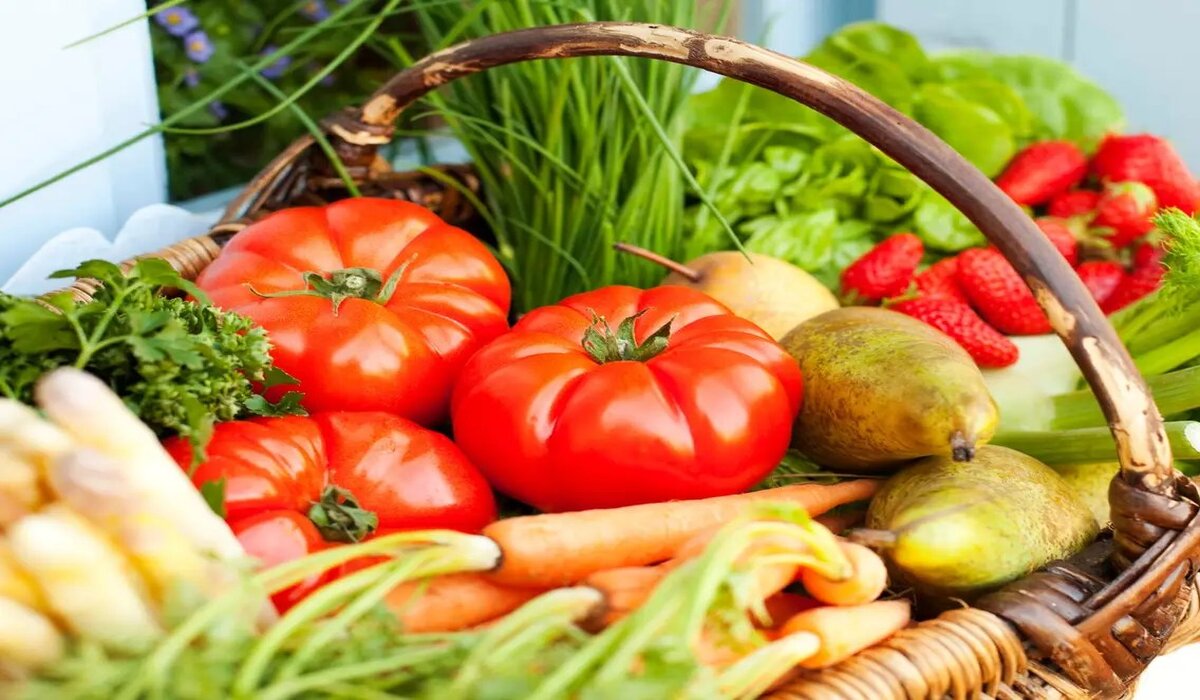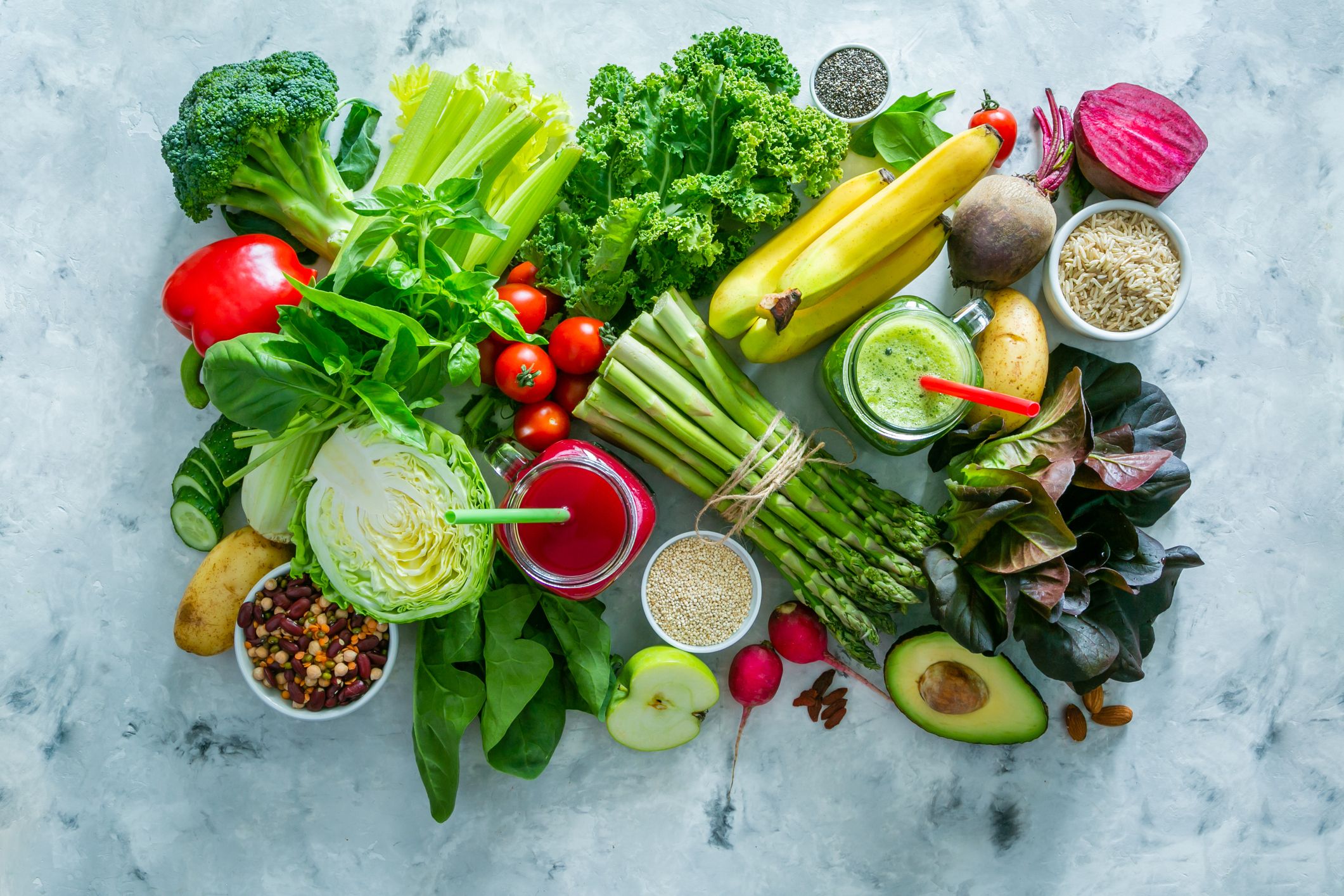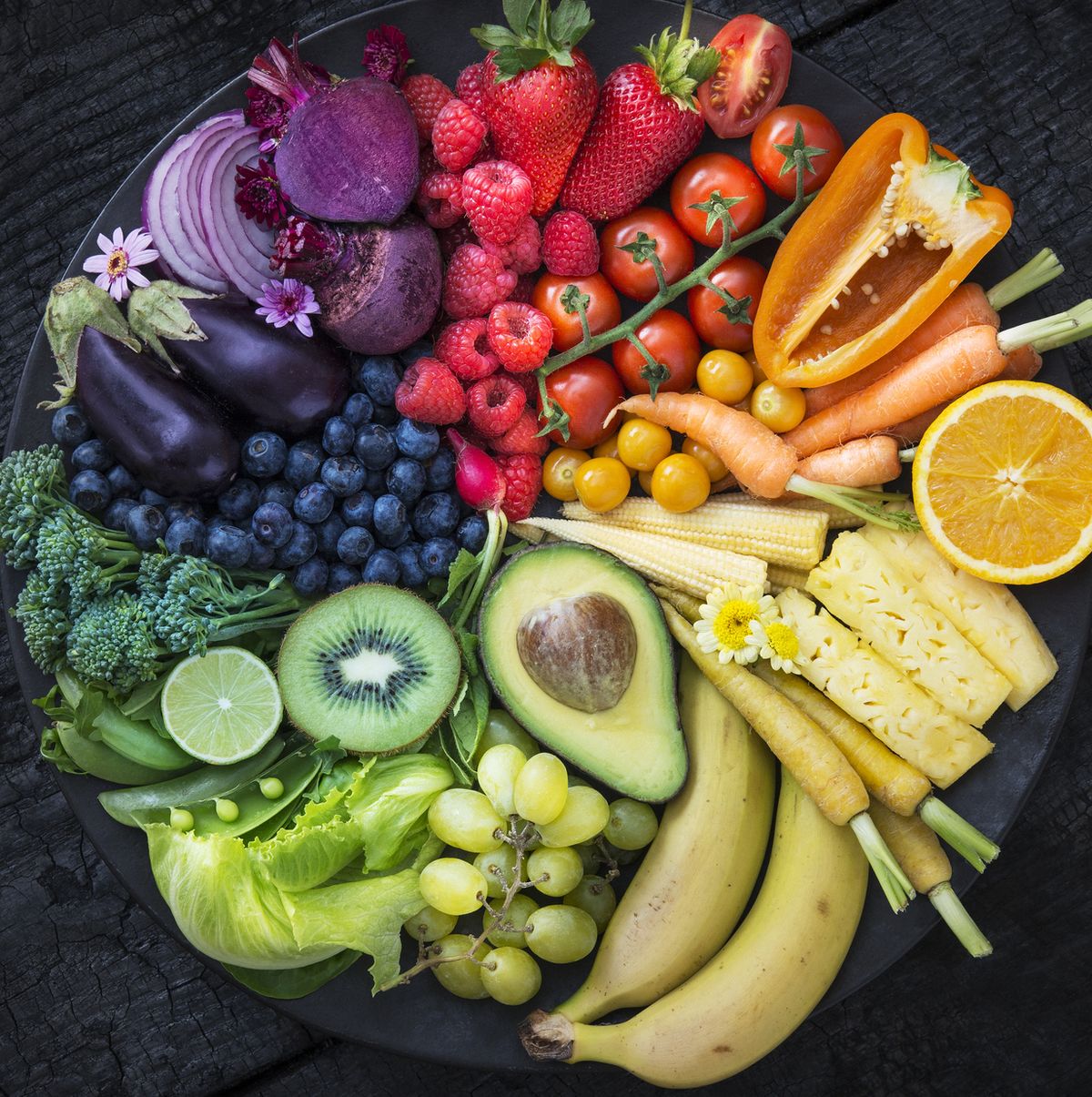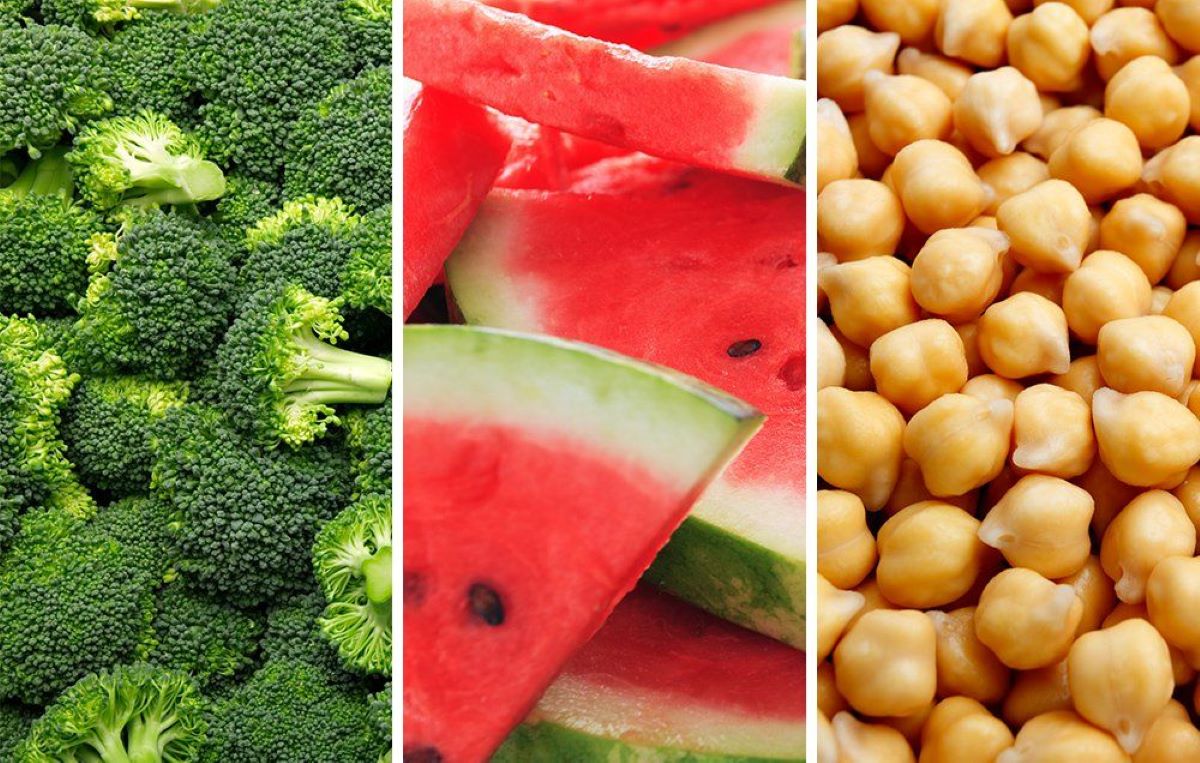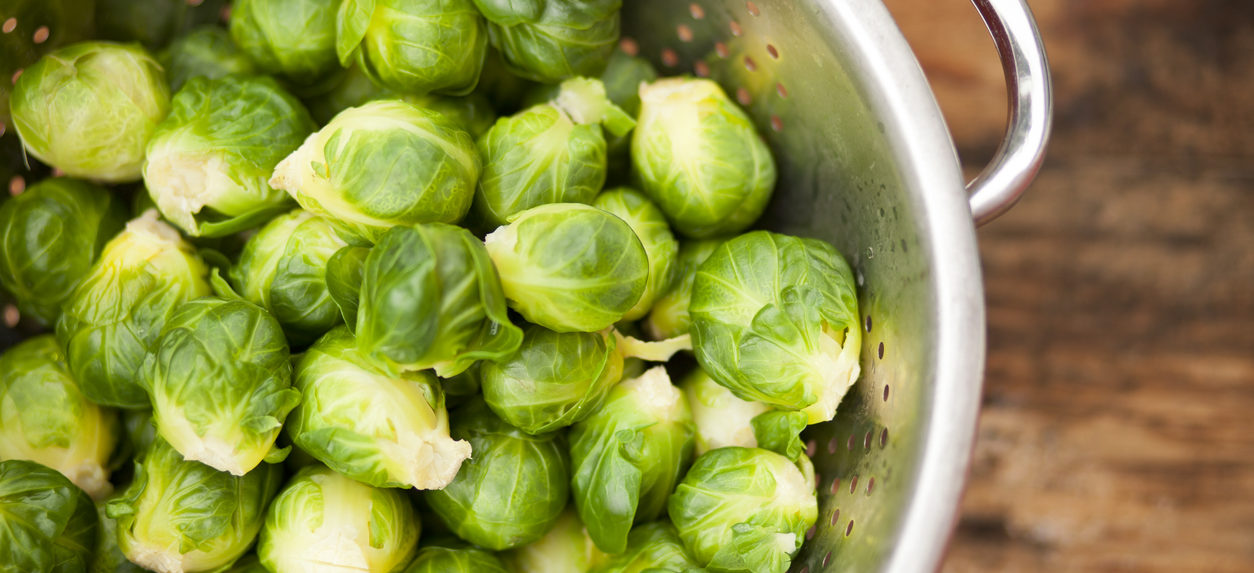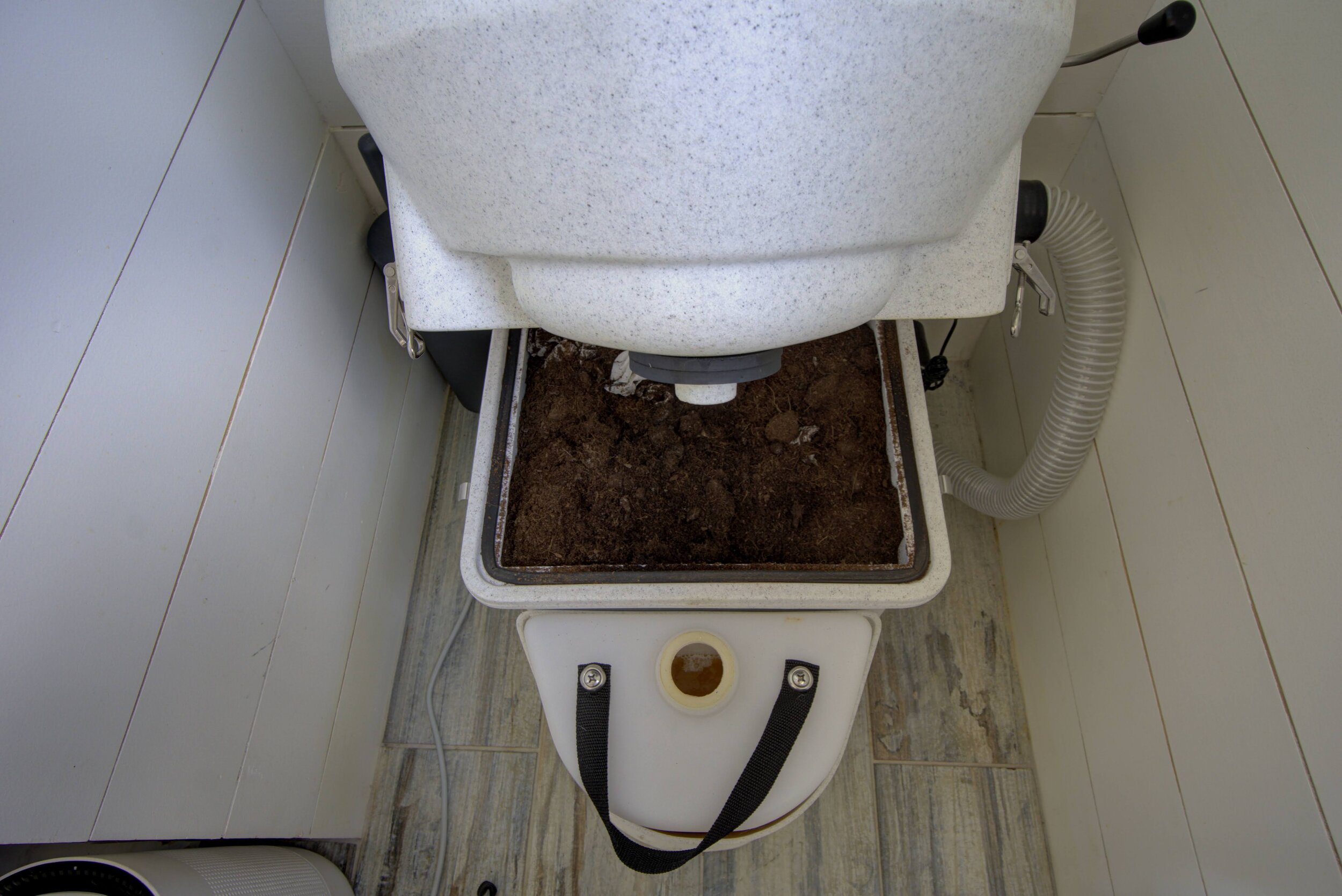Home>Gardening News and Trends>Latest News>How To Clean Fruits And Vegetables Naturally


Latest News
How To Clean Fruits And Vegetables Naturally
Modified: January 22, 2024
Learn the latest news on how to naturally clean fruits and vegetables. Discover effective techniques for maintaining their freshness and removing pesticides.
(Many of the links in this article redirect to a specific reviewed product. Your purchase of these products through affiliate links helps to generate commission for Chicagolandgardening.com, at no extra cost. Learn more)
Table of Contents
- Introduction
- Why Clean Fruits and Vegetables?
- Common Contaminants on Produce
- Understanding Different Types of Produce
- The Importance of Organic vs. Conventionally Grown
- How to Wash Fruits and Vegetables
- Homemade Fruit and Vegetable Wash
- Using Vinegar as a Natural Cleaning Agent
- Salt Water Soak Method
- Baking Soda Scrub Technique
- Brushing or Scrubbing Produce
- Drying Fruits and Vegetables
- Storing Cleaned Produce
- Additional Tips and Precautions
- Conclusion
Introduction
Welcome to our comprehensive guide on how to clean fruits and vegetables naturally. As consumers become increasingly health-conscious and aware of the potential risks associated with pesticide residues and other contaminants on produce, the importance of proper fruit and vegetable cleaning cannot be overstated.
Every year, millions of people around the world consume fruits and vegetables as part of a healthy diet. However, many are unaware of the potential toxins and contaminants that can lurk on the surfaces of these fresh and nutritious foods. Pesticides, herbicides, bacteria, and even traces of fertilizer are just some of the common pollutants that can cling to the skins of fruits and vegetables.
Properly cleaning fruits and vegetables is not only crucial for removing dirt and impurities but also for reducing the risk of foodborne illnesses. The Centers for Disease Control and Prevention (CDC) estimates that nearly 48 million cases of foodborne illnesses occur in the United States alone each year. By following proper cleaning techniques, we can significantly minimize this risk and promote good health.
In this guide, we will explore different types of produce and their unique cleaning needs, delve into the importance of choosing organic produce whenever possible, and provide you with various methods to effectively clean your fruits and vegetables. We will highlight natural cleaning agents like vinegar and saltwater, as well as techniques like scrubbing and soaking, to ensure that your produce is clean and safe for consumption.
Whether you have a garden full of homegrown fruits and vegetables or purchase your produce from the local grocery store or farmers’ market, this guide will equip you with the knowledge and strategies to maintain a clean and healthy plate of fruits and vegetables. By adopting natural cleaning methods, we can preserve the nutritional integrity of our produce and protect ourselves and our loved ones from potential health risks.
So, let’s dive in and discover how to clean fruits and vegetables naturally!
Why Clean Fruits and Vegetables?
Cleaning fruits and vegetables before consumption is an essential step in promoting good health and food safety. While produce is known for its abundance of vitamins, minerals, and antioxidants, it can also harbor various contaminants that pose a risk to our well-being. Here are some key reasons why it is important to clean your fruits and vegetables:
- Removes Pesticide Residues: Conventionally grown fruits and vegetables are often treated with pesticides to protect them from pests and diseases. These pesticides can leave behind residue on the produce, which, if consumed without proper cleaning, can potentially have harmful effects on our health.
- Reduces Bacteria and Germs: Fruits and vegetables can come into contact with harmful bacteria, such as E. coli and Salmonella, during various stages of production and handling. Proper cleaning helps to remove these bacteria and minimize the risk of foodborne illnesses.
- Eliminates Dirt and Soil: Naturally, fruits and vegetables can accumulate dirt, soil, and other debris during the growing and harvesting process. Cleaning removes these impurities, improving both the appearance and taste of the produce.
- Minimizes Chemical Contaminants: Aside from pesticides, fruits and vegetables can also be exposed to other chemical contaminants, such as heavy metals and environmental pollutants. Cleaning helps to reduce the presence of these substances, promoting safer consumption.
- Prevents Cross-Contamination: It is important to note that fruits and vegetables can come into contact with other items in our shopping carts, refrigerators, or during preparation. Proper cleaning helps to prevent cross-contamination, ensuring that harmful bacteria or contaminants do not spread to other foods.
By taking the time to clean your fruits and vegetables thoroughly, you can significantly reduce the potential risks associated with consuming contaminated produce. Whether you purchase conventionally grown or organic fruits and vegetables, cleaning is an essential step in maintaining food hygiene.
It is worth mentioning that washing alone may not completely eliminate pesticide residues or certain types of bacteria. However, it does help to significantly reduce their presence. Therefore, it is crucial to follow proper cleaning techniques to maximize the effectiveness of the process.
Common Contaminants on Produce
When it comes to consuming fresh fruits and vegetables, it is important to be aware of the common contaminants that can be found on their surfaces. By understanding these contaminants, we can take appropriate measures to remove them and ensure the safety of our produce. Here are some of the most common contaminants found on fruits and vegetables:
- Pesticide Residues: Conventionally grown produce is often sprayed with pesticides to protect them from pests and diseases. While the use of pesticides is regulated, traces of these chemicals can remain on the produce even after washing. It is crucial to wash fruits and vegetables thoroughly to minimize exposure to pesticide residues.
- Bacteria and Pathogens: Fruits and vegetables can come into contact with various types of bacteria and pathogens at different stages of production and handling. Some common bacteria include E. coli, Salmonella, and Listeria. These pathogens can cause foodborne illnesses if consumed. Proper cleaning techniques can help remove bacteria and minimize the risk of contamination.
- Soil and Dirt: During the growing and harvesting process, fruits and vegetables can accumulate soil, dirt, and other debris. These impurities not only affect the appearance of the produce but can also harbor bacteria and other contaminants. Thoroughly cleaning and rinsing fruits and vegetables helps remove these particles.
- Chemical Residues: Apart from pesticides, fruits and vegetables can be exposed to other chemical residues, such as herbicides, fungicides, and fertilizers. These substances can have potential health effects if consumed in large quantities. Washing produce can help reduce the presence of these chemical residues.
- Wax and Coatings: Some fruits and vegetables, especially those with a glossy appearance, are coated with wax or other substances to enhance their appearance and prolong their shelf life. While these coatings are generally considered safe, it is still important to wash and remove them before consumption.
- Foreign Substances: Occasionally, foreign substances such as dirt, insects, or even small stones may be present on the surface of fruits and vegetables. Proper cleaning ensures the removal of these substances, enhancing both the safety and overall quality of the produce.
By being aware of these common contaminants and taking the necessary precautions, we can minimize the potential risks associated with consuming contaminated produce. Proper cleaning techniques play a vital role in removing harmful substances and ensuring the health and well-being of ourselves and our loved ones.
Understanding Different Types of Produce
When it comes to cleaning fruits and vegetables, it is important to understand that different types of produce may require different approaches. Some fruits and vegetables have delicate surfaces, while others have tougher skins or porous textures. Here is a closer look at how to clean and handle different types of produce:
- Leafy Greens: Leafy greens like lettuce, spinach, and kale should be thoroughly rinsed under cool running water. Gently agitate the leaves to remove dirt and debris. It is advisable to discard the outermost layer of leaves on head lettuce to reduce any potential contamination.
- Root Vegetables: Root vegetables like carrots, radishes, and potatoes should be scrubbed under running water with a vegetable brush to remove any soil or dirt. Pay extra attention to crevices and areas with visible dirt. Trim off any damaged or bruised areas before use.
- Firm Fruits: Firm fruits like apples, pears, and peaches can be washed under running water while gently rubbing the skin with your hands to remove any dirt or wax. For fruits with tough skins, a gentle scrub with a soft brush can be effective. Dry thoroughly after washing.
- Berries: Berries like strawberries, blueberries, and raspberries are delicate and should not be soaked in water. Rinse them gently under a gentle stream of water to remove dirt and debris. Drain well and pat dry with a paper towel.
- Citrus Fruits: Citrus fruits like oranges, lemons, and grapefruits can be washed under running water to remove any dirt or residue on the skin. Use a produce brush to gently scrub the skin, especially if it feels waxy. Dry thoroughly before using or storing.
- Soft Fruits: Soft fruits like tomatoes, grapes, and cherries should be washed gently under running water to remove any dirt or residues. Be careful not to bruise or damage the delicate skin. Dry them gently with a soft cloth or paper towel.
Remember, the goal is to remove any surface contaminants while preserving the taste, texture, and nutritional value of the produce. It is important to note that some fruits and vegetables may have natural protective coatings, and excessive washing or scrubbing may remove these coatings. In such cases, a gentle rinse is sufficient.
Understanding the specific cleaning needs of different types of produce ensures that you handle them correctly, maintaining their quality and safety. Following these guidelines will help you enjoy fresh and healthy fruits and vegetables with peace of mind.
The Importance of Organic vs. Conventionally Grown
When it comes to choosing fruits and vegetables, one important aspect to consider is whether to opt for organic or conventionally grown produce. Understanding the differences between the two can help us make informed choices about the food we consume. Here are some key points to consider when weighing the importance of organic versus conventionally grown produce:
- Pesticide Residues: One of the primary reasons many people choose organic produce is to reduce exposure to pesticide residues. Organic farming practices prohibit the use of synthetic pesticides, herbicides, and genetically modified organisms (GMOs), minimizing the potential risks associated with these substances. Conventionally grown produce, on the other hand, may contain pesticide residues, although they generally remain within legal limits.
- Nutrition and Taste: Research suggests that organic produce may contain higher levels of certain nutrients, such as vitamin C, iron, and magnesium, compared to conventionally grown produce. Additionally, many people find that organic fruits and vegetables have a more vibrant taste and flavor profile, which can enhance the overall eating experience.
- Environmental Impact: Organic farming practices focus on sustainability and environmental conservation. These methods prioritize soil health, biodiversity, and natural pest management, reducing the use of synthetic chemicals and minimizing the impact on ecosystems. By supporting organic farming, we contribute to the preservation of the environment for future generations.
- Supporting Local Farmers: Choosing organic produce often means supporting local farmers who follow sustainable agricultural practices. By purchasing organic fruits and vegetables, we can help sustain smaller-scale farms and promote the growth of organic farming communities, fostering a more diverse and resilient food system.
- Personal Preference and Values: Some individuals prioritize organic produce based on personal beliefs and values, such as promoting animal welfare, avoiding GMOs, or supporting sustainable and ethical farming practices. Organic certification provides a clear standard for these individuals to align their food choices with their values.
It is important to note that while organic produce offers potential benefits, conventionally grown fruits and vegetables can still be part of a healthy diet. The most important aspect is to ensure that all produce, regardless of its cultivation method, is thoroughly washed and cleaned to reduce potential risks.
Ultimately, the choice between organic and conventionally grown produce is a personal one. It depends on factors such as availability, budget, personal preferences, and individual health concerns. Considering the various considerations will help you make informed decisions about the produce you choose to include in your diet.
How to Wash Fruits and Vegetables
Cleaning fruits and vegetables properly is essential for removing dirt, bacteria, and potential contaminants. Follow these simple steps to ensure your produce is thoroughly cleaned:
- Start with Clean Hands: Before handling fruits and vegetables, wash your hands with soap and warm water for at least 20 seconds. This helps prevent the transfer of additional bacteria and germs.
- Rinse Under Running Water: Place the produce under cool running water. As the water flows over the surface, gently rub the produce with your hands to remove any visible dirt, debris, or pesticide residues.
- Use a Vegetable Brush: For produce with tougher skins or natural ridges, consider using a clean vegetable brush. Gently scrub the surface to remove any stubborn dirt or contaminants. Be careful not to bruise or damage the fruits or vegetables.
- Avoid Soap or Detergent: It is generally not recommended to use soap or detergent when washing produce. These substances can leave behind residues and are not safe for consumption.
- Prioritize Leafy Greens: For leafy greens like lettuce or spinach, individually remove and rinse each leaf under running water. This ensures thorough cleaning and removes any trapped dirt between the leaves.
- Pay Attention to Crevices: For produce with crevices or textured surfaces, such as strawberries or cauliflower, take extra care to clean these areas. Use your fingertips or a soft brush to gently remove any dirt or residue.
- Handle Delicate Fruits with Care: Delicate fruits like berries or grapes should be rinsed gently under running water. Avoid excessive pressure or rough handling to prevent bruising or damaging the fruits.
- Give Citrus Fruits a Thorough Rinse: Citrus fruits should be rinsed under running water to remove any dirt or residue on the skin. Use your hands to rub the surface gently to ensure thorough cleaning.
- Dry Thoroughly: After washing, pat dry or use a clean cloth or paper towel to remove excess moisture from the fruits and vegetables. This helps prevent the growth of bacteria and prolongs the shelf life of the produce.
Remember that washing produce is an essential step, regardless of whether it is organic or conventionally grown. Proper cleaning helps remove surface contaminants and enhances the safety of the fruits and vegetables you consume.
By following these simple steps, you can ensure that your fruits and vegetables are clean, safe, and ready to be enjoyed!
Homemade Fruit and Vegetable Wash
Using a homemade fruit and vegetable wash can be an effective way to remove dirt, bacteria, and pesticide residues from your produce. Here are a few simple and natural recipes that you can make at home:
- Vinegar Solution: Mix equal parts of water and vinegar, preferably white vinegar or apple cider vinegar. Place the mixture in a spray bottle and spritz it onto your fruits and vegetables. Let it sit for a few minutes, then rinse thoroughly with cool water. Vinegar is known for its antimicrobial properties and can help remove surface contaminants.
- Salt Water Soak: Dissolve 1 tablespoon of salt in a bowl of water. Soak your produce in the mixture for about 10 minutes, then rinse thoroughly. Salt has natural cleansing properties and can assist in removing pesticide residues and certain bacteria.
- Baking Soda Scrub: Create a paste by mixing 1 tablespoon of baking soda with water. Apply the paste to a clean sponge or soft brush and gently scrub your fruits and vegetables. Rinse thoroughly with water to remove any baking soda residue. Baking soda can help remove dirt, surface pesticides, and waxy coatings from produce.
- Lemon Juice Rinse: Squeeze the juice of a lemon into a bowl of water. Dip your produce into the mixture or use a sponge to apply the lemon juice onto the surface. The acidity in lemon juice can help break down pesticide residues.
It is important to note that homemade fruit and vegetable washes may not completely eliminate all contaminants. However, they can significantly reduce their presence and provide an extra level of cleaning when used in conjunction with proper washing techniques.
Remember to always rinse your produce thoroughly with clean water after using any homemade washes to remove any residual solution or taste. Additionally, if you have any concern about allergies or sensitivities, test the homemade wash on a small portion of the produce before using it on the entire batch.
Using a homemade fruit and vegetable wash is a cost-effective and natural way to ensure your produce is clean and safe for consumption. Incorporate these simple recipes into your routine to enjoy fresh and healthy fruits and vegetables with peace of mind.
Using Vinegar as a Natural Cleaning Agent
Vinegar is a versatile household ingredient that can also be used as a natural cleaning agent for fruits and vegetables. Its acidic properties make it effective at removing dirt, bacteria, and pesticide residues. Here’s how you can use vinegar as a fruit and vegetable cleaner:
- Simple Vinegar Rinse: Create a mixture of 1 part vinegar to 3 parts water. Place the solution in a spray bottle and generously spritz it onto your fruits and vegetables. Let it sit for a few minutes, then rinse thoroughly with cool water. Vinegar helps dissolve pesticide residues and removes surface contaminants.
- Using Undiluted Vinegar for Thick-Skinned Produce: For fruits and vegetables with thick skins, such as melons or avocados, you can directly apply undiluted vinegar onto the surface. Gently rub the vinegar over the skin, then rinse thoroughly with water. This method can help remove dirt, waxes, and pesticide residues effectively.
- Soaking in Vinegar Solution: Fill a bowl or sink with a mixture of 1 part vinegar to 3 parts water. Submerge your produce in the solution and let it soak for 10-15 minutes. After soaking, rinse the fruits and vegetables thoroughly with water to remove any residual vinegar taste.
- Enhancing the Cleaning Power: For tougher stains, you can add a little salt or baking soda to the vinegar solution. A pinch of salt or a teaspoon of baking soda can help boost the cleaning action of the vinegar, providing a gentle scrubbing effect.
It’s important to use white vinegar or apple cider vinegar for cleaning produce. These types of vinegar are food-safe and do not have any harmful chemicals. Avoid using other types of vinegar, such as balsamic or red wine vinegar, as they can leave behind unwanted flavors on the produce.
While vinegar is a natural cleaning agent, it’s important to note that it may not eliminate all contaminants or bacteria. Proper washing techniques, such as rinsing under running water and scrubbing with a brush, should still be followed to ensure thorough cleaning. Additionally, always purchase vinegar from a reputable source to ensure its quality and safety.
Using vinegar as a natural cleaning agent provides an affordable and eco-friendly way to clean your fruits and vegetables. By incorporating vinegar into your cleaning routine, you can enjoy fresh and safe produce with the added peace of mind that comes with using a natural solution.
Salt Water Soak Method
The salt water soak method is a simple and effective way to clean fruits and vegetables, particularly produce with tough skins or those that may be contaminated with pesticide residues. Saltwater can help remove dirt, debris, and certain types of bacteria. Here’s how you can use the salt water soak method:
- Prepare the Salt Water Solution: Fill a bowl or sink with water, ensuring it’s enough to submerge the produce completely. Add about 1 tablespoon of salt per 4 cups of water. Stir the solution to dissolve the salt.
- Soak the Produce: Place your fruits or vegetables in the salt water solution and let them soak for about 10-15 minutes. Ensure that the produce is fully submerged to allow the salt water to penetrate and remove contaminants.
- Gently Agitate the Water: During the soaking process, you can gently agitate the water with your hands or a spoon. This motion helps dislodge dirt and debris from the surface of the produce.
- Rinse Thoroughly: After the soaking time is complete, remove the produce from the salt water solution and rinse it under cool running water. Ensure thorough rinsing to remove any remaining salt or debris.
- Pat Dry or Air Dry: After rinsing, pat dry your fruits or vegetables with a clean towel or paper towel. Alternatively, you can allow them to air dry on a clean rack or towel.
The salt water soak method is particularly effective for cleaning produce with thick skins, such as melons, avocados, or root vegetables like potatoes. The saltwater helps to draw out dirt, debris, and certain contaminants, providing you with cleaner and safer produce.
It is important to note that while the salt water soak method can help remove certain types of bacteria and surface contaminants, it may not eliminate all pesticide residues. For thorough cleaning, combining the salt water soak method with gentle scrubbing using a vegetable brush can be an effective approach.
Remember to use clean, food-grade salt without any additives or iodine for the salt water solution. Iodized or flavored salts may leave unwanted residues or flavors on the produce. Additionally, always wash your hands and utensils before and after handling produce and discard any damaged or bruised portions before consumption.
By utilizing the salt water soak method, you can have the confidence of cleaner and safer fruits and vegetables, ensuring the health and well-being of yourself and your loved ones.
Baking Soda Scrub Technique
The baking soda scrub technique is a natural and effective method to clean fruits and vegetables. Baking soda, also known as sodium bicarbonate, acts as a gentle abrasive that can help remove dirt, pesticide residues, and waxy coatings from produce. Here’s how you can use the baking soda scrub technique:
- Create a Baking Soda Paste: In a small bowl, mix about 1 tablespoon of baking soda with enough water to create a thick paste-like consistency. Adjust the amount of water as needed.
- Apply the Paste: Using a clean sponge or soft brush, apply the baking soda paste to the skin of your fruits and vegetables. Gently scrub the surface, focusing on areas with dirt, residues, or waxy coatings. Be careful not to apply too much pressure to avoid damaging the produce.
- Scrub and Rinse: While scrubbing, you can also lightly massage the produce to help dislodge any debris or contaminants. Once you’ve thoroughly scrubbed the surface, rinse the produce under cool running water to remove the baking soda and any loosened particles.
- Dry Thoroughly: After rinsing, pat your fruits or vegetables dry with a clean towel or paper towel. Ensure that the produce is completely dry before storing to prevent the growth of bacteria or mold.
The baking soda scrub technique is particularly useful for removing waxy coatings commonly found on certain fruits and vegetables. It can help provide a deep clean and leave the produce feeling refreshed.
It is important to note that while baking soda is generally safe to use, some produce may be more delicate or susceptible to damage. Exercise caution and adjust the pressure applied during scrubbing accordingly. For fruits and vegetables with sensitive or thin skins, such as berries or leafy greens, it is often best to stick to gentler cleaning methods to avoid damaging the produce.
Additionally, baking soda is not a guaranteed method for removing all pesticide residues. For thorough cleaning, it is recommended to combine the baking soda scrub technique with other washing methods, such as rinsing under running water and using natural cleaning agents like vinegar.
By incorporating the baking soda scrub technique into your cleaning routine, you can enhance the effectiveness of removing dirt, residues, and waxy coatings from your fruits and vegetables. Enjoy the satisfaction of cleaner, fresher produce for your meals!
Brushing or Scrubbing Produce
Brushing or scrubbing produce is an effective method to remove dirt, debris, and certain contaminants that may be present on the surface of fruits and vegetables. This technique is particularly useful for produce with irregular textures, tough skins, or areas that require more attention. Here’s how you can effectively brush or scrub your produce:
- Choose the Right Tool: Select a clean vegetable brush or scrub brush with soft bristles. Ensure that it is solely reserved for cleaning produce to avoid cross-contamination.
- Wet the Produce: Rinse the fruits or vegetables under cool running water to wet the surface. This helps loosen any dirt or residues and prepares them for the scrubbing process.
- Apply Gentle Pressure: Using the vegetable brush, gently scrub the surface of the produce in a back-and-forth motion. Pay extra attention to areas that may have dirt, residues, or uneven textures. Apply appropriate pressure to remove impurities without damaging the produce.
- Focus on Crevices and Bumpy Surfaces: For produce with crevices, bumps, or rough textures, such as broccoli or potatoes, take extra care to clean these areas thoroughly. Use the bristles of the brush to reach into the crevices and remove any trapped dirt or debris.
- Rinse Thoroughly: After brushing or scrubbing, rinse the produce under cool running water to remove any loosened particles, dirt, or residues. Ensure that all surfaces are well-rinsed to leave your produce clean and fresh.
- Dry Gently: Pat the produce dry with a clean towel or paper towel after rinsing. Make sure not to use excessive force that could bruise or damage the fruits or vegetables.
Brushing or scrubbing produce is particularly beneficial for items with tough skins or those that have uneven surfaces that can easily trap dirt. It helps to remove residue, pesticides, and other contaminants that may adhere to the skin of the produce.
While this method is effective for certain fruits and vegetables, it may not be suitable for more delicate or easily bruised produce, such as berries or leafy greens. For these types of produce, it is best to use gentler cleaning techniques to avoid damaging or bruising the fragile skin.
Remember to practice good hygiene by washing your hands and cleaning the vegetable brush thoroughly after each use. This helps prevent the spread of bacteria and maintain cleanliness for future use.
By incorporating brushing or scrubbing into your produce cleaning routine, you can ensure a thorough and effective cleaning process, removing dirt and contaminants to enjoy fresh and safe fruits and vegetables.
Drying Fruits and Vegetables
Drying fruits and vegetables properly after washing is an important step to ensure that they stay fresh, minimize bacterial growth, and maintain their quality. Here are some key tips for effectively drying your produce:
- Pat Dry with a Clean Towel or Paper Towel: After rinsing your fruits and vegetables, use a clean towel or paper towel to gently pat them dry. Be sure to use a towel that is designated for food use and is free from any detergent or fabric softener residue.
- Air Drying: For produce that is more robust, such as root vegetables, apples, or citrus fruits, you can simply place them on a clean rack or towel and allow them to air dry. Make sure the surface is well-ventilated to facilitate drying.
- Avoid Excessive Force: When drying more delicate fruits or vegetables, like tomatoes, grapes, or berries, handle them with care to avoid bruising or damaging the skin. Gently pat them dry or allow them to air dry without applying any pressure.
- Remove Excess Moisture: Moisture promotes bacterial growth and can lead to premature spoilage of your produce. Ensure that all surfaces are dry, paying attention to crevices and hard-to-reach areas where water may accumulate.
- Store in a Clean and Dry Container: Once your produce is thoroughly dried, transfer them to clean and dry containers or storage bags. This will help protect them from moisture accumulation and extend their shelf life.
- Store in the Refrigerator: It is recommended to store most fruits and vegetables in the refrigerator to maintain their freshness. However, certain types of produce, like bananas, tomatoes, and onions, can be stored at room temperature. Refer to specific storage recommendations for each type of produce to ensure maximum quality and longevity.
Properly drying your produce after washing not only helps to maintain its quality and freshness but also reduces the risk of bacterial growth that can lead to foodborne illnesses. Removing excess moisture also prevents the formation of water spots and reduces the chances of mold or decay.
Remember to wash your hands before handling your freshly cleaned produce and ensure that your drying surface and containers are clean to avoid any potential contamination.
By following these drying techniques, you can prolong the shelf life of your fruits and vegetables, allowing you to enjoy them longer and minimize food waste.
Storing Cleaned Produce
Properly storing your cleaned produce is crucial to maintain its freshness, nutritional value, and safety. Here are some essential tips for effectively storing your fruits and vegetables:
- Separate Fruits and Vegetables: Fruits release ethylene gas as they ripen, which can accelerate the spoilage of vegetables. Store fruits and vegetables separately to prevent this gas from affecting the quality and shelf life of your produce.
- Refrigerate Properly: Most fruits and vegetables should be stored in the refrigerator to slow down the ripening process and maintain their freshness. However, certain items like avocados, bananas, and tomatoes may do better stored at room temperature.
- Use Proper Containers: Choose appropriate storage containers or bags for different types of produce. Use breathable bags or perforated containers for items that require airflow, such as leafy greens. For produce that needs to retain moisture, like berries, use airtight containers or containers lined with a paper towel to absorb excess moisture.
- Remove Excess Moisture: Before storing, ensure that your produce is thoroughly dry to prevent the growth of mold and bacteria. Excess moisture can accelerate spoilage and decrease the shelf life of your fruits and vegetables.
- Check for Spoilage: Regularly check your stored produce for any signs of spoilage or decay. Remove any spoiled items to prevent the spread of mold or bacteria to other fruits and vegetables.
- Consume Perishable Items First: Plan your meals to prioritize consuming more perishable produce (e.g., berries, leafy greens) before items with longer shelf lives. This ensures you enjoy your produce at its peak freshness while minimizing food waste.
- Freeze Excess Produce: If you have more produce than you can consume before it spoils, consider freezing it. Many fruits and vegetables can be frozen for later use in recipes or smoothies. Properly package and label the produce before freezing to maintain its quality.
Remember to follow any specific storage recommendations for different types of produce. Some items may require special conditions, such as storing potatoes in a cool, dark place or keeping herbs fresh by placing them in a glass of water like a bouquet. Check individual produce guidelines to ensure optimal storage conditions.
By storing your cleaned produce properly, you can extend its shelf life, maintain its nutritional value, and reduce food waste. Enjoy the freshest produce for longer, and savor the flavors and benefits of your fruits and vegetables.
Additional Tips and Precautions
When it comes to cleaning and handling fruits and vegetables, there are some additional tips and precautions to keep in mind to ensure their safety and quality. Here are a few key points to consider:
- Check for Freshness: Before cleaning, inspect your produce for any signs of spoilage, mold, or damage. Discard any items that appear rotten or bruised.
- Wash Even if Peeling: Even if you plan to peel your produce, it is still important to wash it thoroughly beforehand. This helps prevent any potential transfer of dirt or contaminants from the surface to the inside when cutting or peeling.
- Use Clean Cutting Boards and Utensils: When preparing fruits and vegetables, ensure that your cutting boards and utensils are clean and sanitized to prevent cross-contamination. Wash them with hot, soapy water before and after each use.
- Discard Outer Leaves: For leafy greens like lettuce or cabbage, consider removing and discarding the outer leaves. These outer layers may have more exposure to dirt or contaminants and are often tougher and less desirable.
- Buy Locally and Seasonally: Whenever possible, opt for locally grown and seasonal produce. Locally sourced fruits and vegetables often have shorter transport times, reducing their exposure to potential contaminants during long-distance travel.
- Know the Source: If you have concerns about pesticide use or contamination, consider purchasing organic produce or seeking out information about the farming practices of the producer. Organic certification or direct communication with local farmers can provide assurance regarding the quality of the produce.
- Follow Storage Guidelines: Pay attention to specific storage recommendations for different types of produce. Some items are more sensitive to cold temperatures, while others require refrigeration to retain freshness and prevent spoilage.
- Wash Immediately Before Consumption: It is generally recommended to wash your produce right before consuming it rather than in advance. Washing beforehand may increase moisture, potentially leading to faster spoilage.
- Use Gloves for Hot Peppers: When handling hot peppers or chili peppers, wear gloves to protect your skin from potential irritants. Avoid touching your face or eyes while handling these types of produce.
- Consider Pre-washed Produce: Sometimes, pre-packaged produce labeled as “pre-washed” or “ready-to-eat” can offer convenience. However, it is still advisable to give them a quick rinse under running water before consumption.
By following these additional tips and precautions, you can further ensure the cleanliness, safety, and quality of your fruits and vegetables. Incorporate these practices into your routine to fully enjoy the benefits of fresh and nutritious produce.
Conclusion
Ensuring that the fruits and vegetables we consume are clean and safe is essential for maintaining good health. By implementing proper cleaning techniques, we can remove dirt, bacteria, and potential contaminants from the surfaces of our produce. From washing under running water to using natural cleaning agents like vinegar or baking soda, there are numerous methods available to effectively clean fruits and vegetables.
Understanding the different types of produce and their specific cleaning needs allows us to tailor our cleaning methods accordingly. Leafy greens, root vegetables, firm fruits, and delicate berries each require unique approaches to ensure thorough cleaning without compromising their integrity.
While organic produce is often sought after for its reduced exposure to pesticides, conventionally grown fruits and vegetables can still be safely consumed by following proper cleaning practices. Good hygiene, such as washing hands and utensils, separating fruits and vegetables, and storing produce correctly, further contributes to maintaining the safety and quality of our food.
By adopting these practices, we can minimize the risk of foodborne illnesses, reduce exposure to pesticide residues, and preserve the nutritional value of our produce. Taking the time to clean and handle our fruits and vegetables properly allows us to fully enjoy their flavors, textures, and health benefits.
So let’s prioritize cleanliness, safety, and quality in our produce choices. From washing to storing, every step counts in ensuring that the fruits and vegetables we consume contribute to our overall well-being. By embracing these natural and effective cleaning methods, we can confidently enjoy fresh, clean, and nourishing produce in our daily diet.
